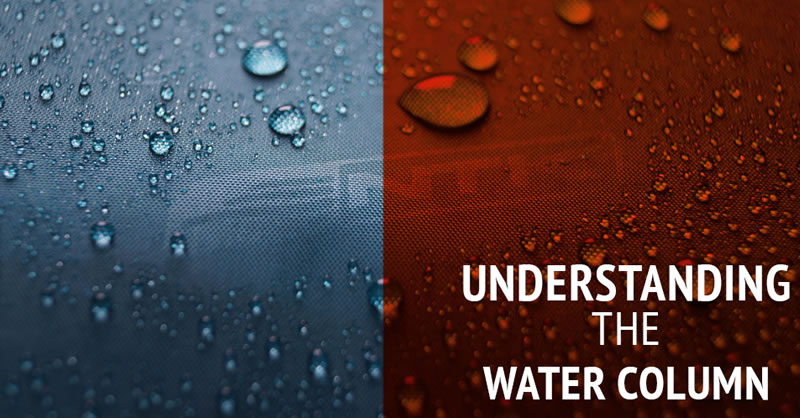
Understanding the Water Column. It is a unit of measure used in the outdoor industry to describe the waterproofness of a material. Because understanding the hydrostatic head is decisive for informed buying decisions, in this article we tell you everything you need to know.
How is the water column measured?
The degree of waterproofness of tents is measured with a hydrostatic pressure test that calculates the resistance of the fabric before the water passes through it. This test is performed using a tube that indicates the number of millimeters vertically. The fabric is placed at one end, while water is added to the tube, and the pressure on the material increases. When water drips through the fabric, it means the material has reached its limit of resistance. The number indicated in millimeters in the tube at that moment represents the “water column”.
Impermeability in practice
To be considered waterproof according to international standards, a fabric must have a resistance of at least 1500 mm of the water column. This means that tents with waterproof ratings lower than this number could withstand light rain for a short time, but they are not waterproof.
Reference values
Here are some numbers to help you understand the resistance of tent materials. Keep in mind that these values are only referential since much will also depend on how the tent is handled (where you locate it, how you clean it, etc).
More than 3000 mm: recommended for rather extreme situations.
2000 to 3000 mm: good resistance to rain and storms for several days.
1000 to 2000 mm: resistance to normal rainfall for short periods.
600 to 1000 mm: resistance to weak and brief rains.
Less than 600 mm: not recommended for use in the rain.
NTK has tents with resistance levels that range from 1500 to 6000 mm of the water column, which is a spec you’ll want to look for to be and feel safe. So, now that you know the importance of this factor, just make sure you bear it in mind at the moment of your next purchase.
Understanding the Water Column is important when choosing a tent.

